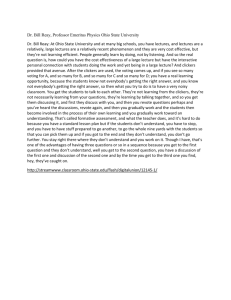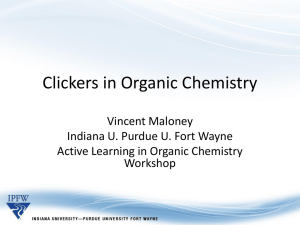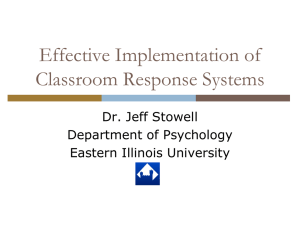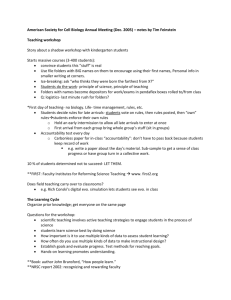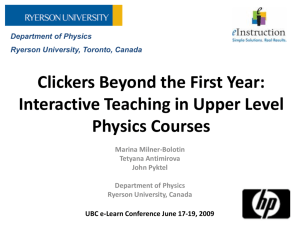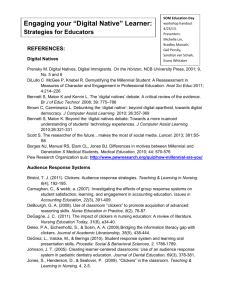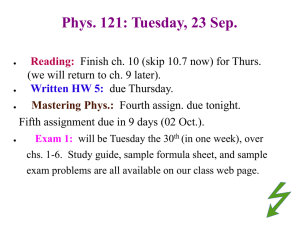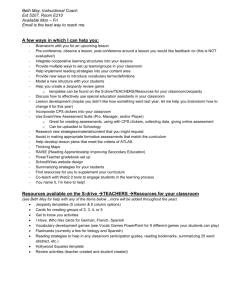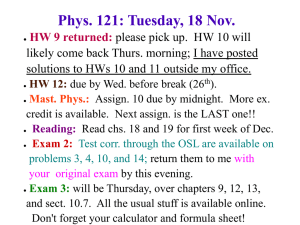Inter active
advertisement
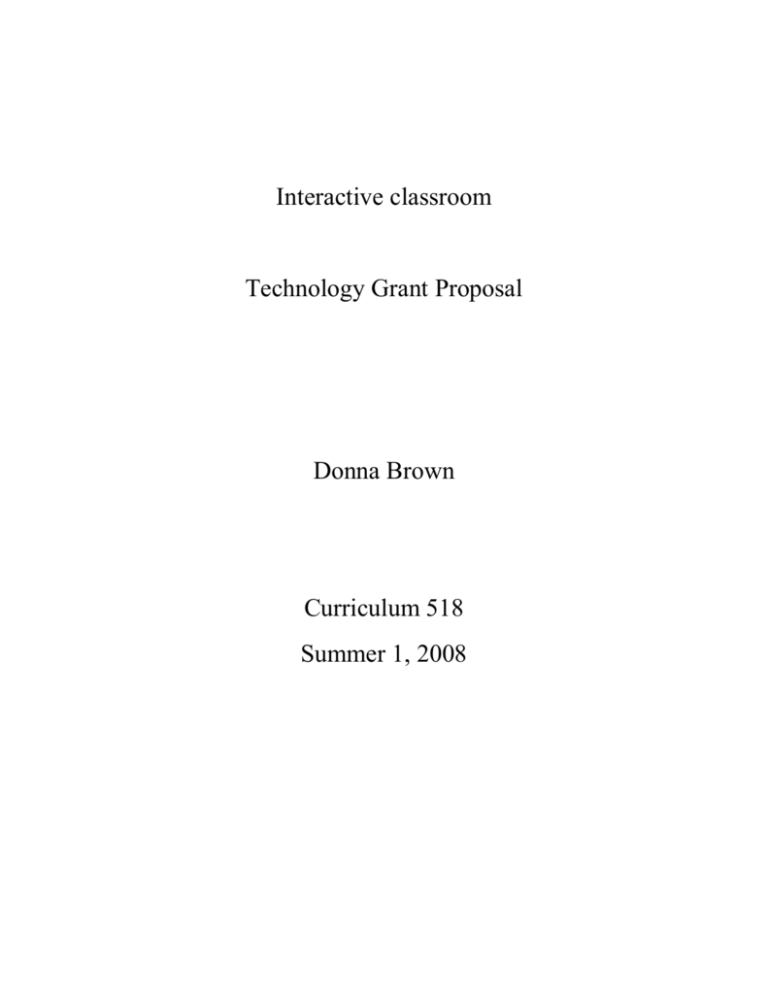
Interactive classroom Technology Grant Proposal Donna Brown Curriculum 518 Summer 1, 2008 Project summary This project involves the purchase of a SMART board and H-ITT CRS equipment to enhance my third grade classroom, making it technologically interactive. It would provide my “at risk students with a new and exciting way to learn. I believe it will enhance learning in two ways. First it will provide a method of keeping my students “on-task” and as a result may reduce the number of discipline problems in the room. This is because these systems provide individual, group and team activities and allow for interactive presentations. I believe it will encourage learning and therefore help students be more successful. Description With the installation of a SMART board and the H-ITT CRS, which comes with free software, a huge improvement in the teacher’s ability to deliver instruction consistent with student’s abilities and learning styles would be made. The software can be used as a data collection and analysis software. It allows all methods to engage students in learning. Questions during instruction, or pre designed questions can b easily generated and displayed in Word, Excel, Powerpoint,Xml, text, Html, and other formats; Quizzes can be administered so that students can answer at their own pace. It can be used in all subject areas. Wireless student response systems—"clickers"—address two of the oldest and most fundamental challenges in teaching: how to engage students and how to determine if they are learning what you are teaching. Clickers are relatively low cost and easy to use. Data show that when they are used well in large lecture classes, clickers increase the engagement of students and improve their learning. Related Literature According to research, technology should b e used as a tool to enhance a child’s educational experience by creating a variety of methods to meet special needs, teach children how to manage information, and allow for opportunities to develop higher order thinking skills. Brain research indicates that not all students learn in one particular strategy. As Dr. Bruce Powell points out, t he teacher needs to create a variety of learning experiences. Wireless student response systems are the most helpful and exciting educational technology I've seen. They do things that really matter in the classroom: let instructors and students immediately know if they are understanding the material, rather than waiting for a test. More that that, they engage and motivate making learning an active, rather than passive experience. Extensive data shows students learn more and enjoy the engagement. Dr. Douglas Duncan of the University of Colorado says” This is especially true when the goals of clicker use are explained to the class before they're used, and when clickers are used in peer instruction: when students are encouraged to debate answers with classmates before answering." The changes that clickers produce in a classroom are small if you only use them occasionally, but profound if you use them more regularly and make them an important part of your class. The regular use of clickers can transform the classroom in a very positive way. Students become active participants, not merely passive listeners to a lecture. They ask more questions. As described in the section 4, if students are allowed to discuss their answers with their neighbors before responding, the impact is even stronger. At the University of Colorado, astronomy, planetary science, and physics faculty found that class attendance increased substantially after the introduction of clickers, from 60%–70% to 80%–90%. The Illinois Institute of Technology (Burnstein & Lederman 2001) reported 80%–90% attendance in classes where clickers were in use. Other universities have reported similar results. Timeline: The best possible timeline would have the equipment and software installed before the beginning of schools in August. This would allow the teacher to become proficient with the board and clickers before the students arrive. August: equipment and system installed September: pre test are assess students in different subject areas (also keep a log of any disciplinary problems) September-December: use systems in classroom instruction December: Assess student achievement according to test scores and grades, Continue to keep log of discipline problems January- April: increase use of programs April: Assess student performance on test and other assessments. May: Compare data. Make comparisons and conclusions. Assess use or ease of data provided by systems Budget: Item Description Total cost -----------------------------------------------------------------------Everything needed to utilize H-ITT in a CP- $1395.00 Colorful - K-12 single classroom: 32 RF remote 3000radio frequency transmitters, 1 RF Base Unit, a 6 ft. USB 32 RF Class-Pack cable, and a carrying case SMART Board 600 interactive whiteboard system $ 4,000.00 --------------------------------------------------------------------------------------------------------------------- Total Cost $5395.00 Accountability Assessment scores as well as data generated by the software programs will be used to study student growth. Principal investigator: The principal investigator for this project will be Donna Brown. Mrs. Brown is the third grade teacher who will be instructing and observing students, recording data, and assessing the results of the interactive technology requested in this grant. References: U.S. Department of Education Technology and education reform. Retrieved June 24, 2008 from htt://www.ed.gov/pubs/EdReformStudies/EdTech Clickers in the Classroom, by Dr. Douglas Duncan of the University of Colorado Clickers: A New Teaching Aid with Exceptional Promise Rational for Using Technology and multimedia in the classroom. Retrieved June26,2008 form http://coe.west.asu.edu/students/hcarter/techrationale.htm


